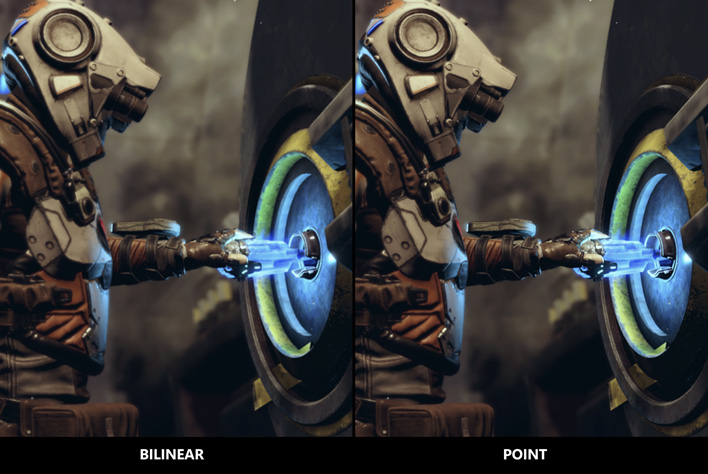Qualcomm Snapdragon GSR Arrives To Boost Mobile Gaming Performance And Battery Life
NVIDIA’s DLSS, AMD’s FSR, Intel’s XeSS, and now Snapdragon GSR are all techniques to render a game or scene at a lower resolution and then upscale it to match the output display using specialized algorithms. These primarily rely on spatial upscaling, which naturally blurs edges and details, that can then be offset by sharpening techniques to restore quality.
These technologies are starting to mature on gaming PCs but are less common in mobile pipelines. For example, AMD FSR is supported in Vulkan which means mobile developers can choose to leverage it, though it is not perfect. Devs are typically restricted to FSR 1.0 for mobile applications which is not as high-quality as FSR 2.0 employable on PCs. It produces better results than simple bilinear interpolation at least but is not as quick and requires two render passes.
Advantages Of Snapdragon GSR For Mobile Gaming
According to Qualcomm, Snapdragon GSR is a single pass solution with several key benefits. “With Snapdragon GSR, 1080p games can become sharper 4K games. Games that were only 30 frames per second can be played at 60+ FPS so graphics look even smoother. And since performance is correlated with power, you can get these features while extending battery life and gameplay time.”Snapdragon GSR uses range aware dynamic scaling with Adreno GPU pipeline-specific customizations to deliver up to 2x scaling in each dimension, or 4x total resolution. These Adreno-targeted optimizations allow Snapdragon GSR to reduce its load on registers, texture samples, and Arithmetic Logic Unit (ALU) instructions, yielding faster frame rates, especially when combined with the single pass comprising both upscaling and sharpening operations.
Snapdragon GSR also performs luminance calculations only using the green channel via a 12-kernel window. Human vision is most sensitive to the green channel, making this the most critical component to get right. It then interpolates the red and blue components which further results in fewer necessary calculations.
Qualcomm has highlighted a few games and studios already working with the technology. These include Activision’s Solid State Studio behind Call of Duty Warzone Mobile, Perfect World’s Tianzhiyou studio in Jade Dynasty: New Fantasy, and GIANTS Software’s Farming Simulator 23 Mobile among a few other titles.
“Snapdragon GSR Upscaling is a great tool for making our mobile title 'Farming Simulator 23' playable on a broader range of hardware. GSR has a low integration time, provides improved quality and is tailored for mobile devices due to its low computational cost” says Stefan Geiger, CTO & Co-Founder of GIANTS Software.
Qualcomm says Snapdragon GSR is compatible with all Snapdragon GPUs and is further compatible with essentially all game engines. However, it will require game dev adoption into a given title to work, and mobile game titles and XR products employing Snapdragon GSR are expected to start launching later this year.






